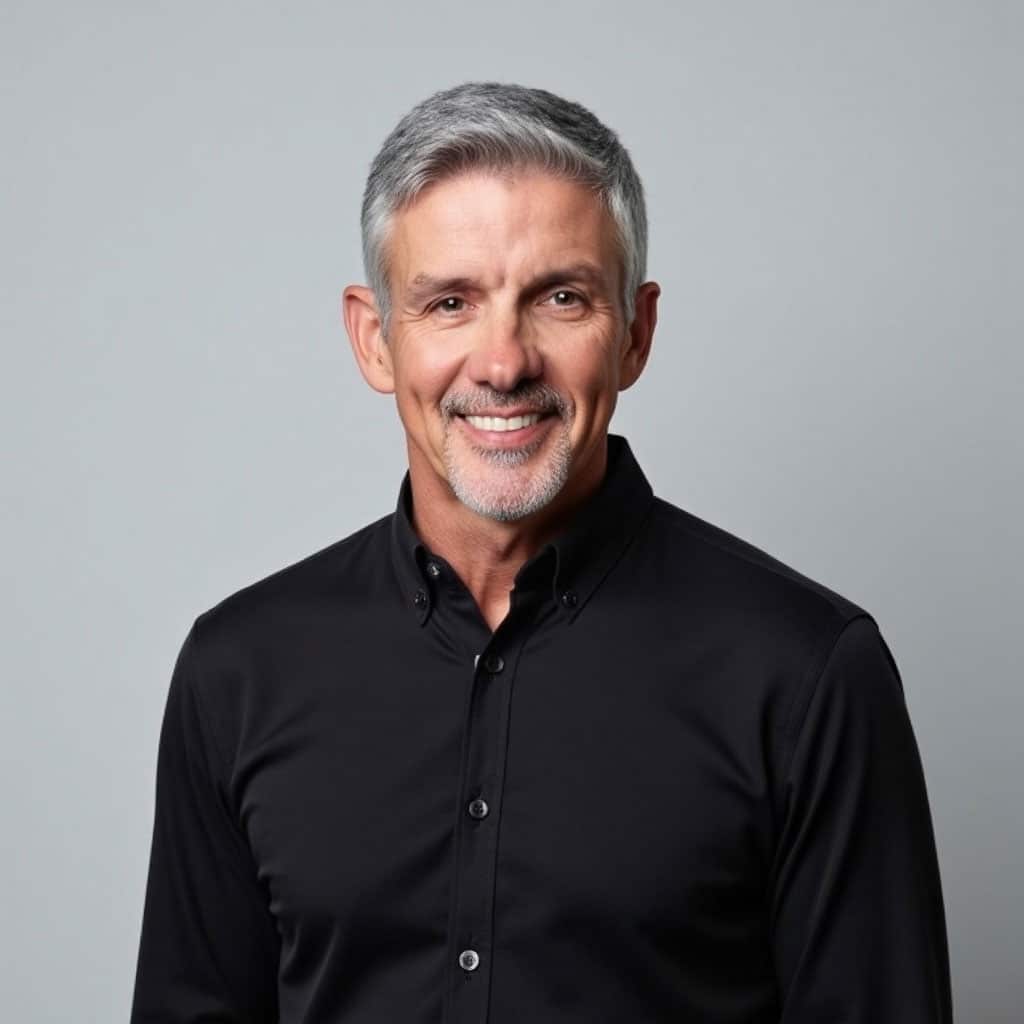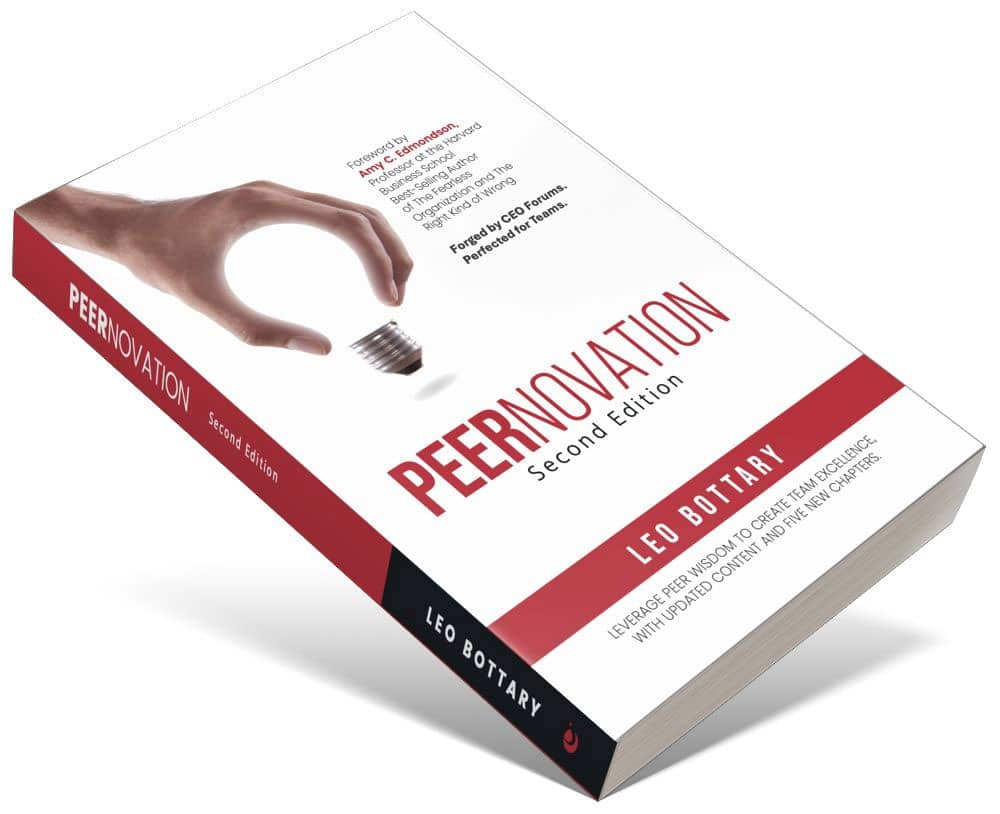Harnessing the Power of Peers in Today’s Workplace

CEOWORLD Magazine External Advisory Board Member and Opinion Columnist Leo Bottary recently released the Second Edition of Peernovation: Forged by CEO Forums. Perfected for Teams. The book includes a Foreword by Harvard Business School Professor and best-selling author Amy Edmondson, an Afterword by CEOWORLD Magazine CEO and Executive Editor Prof. Dr. Amarendra Bhushan Dhiraj, updated content, and five new chapters. Since 2017, Leo has written 170 CEOWORLD articles about leveraging the power of peers and taking what CEO Forums have been doing so brilliantly for decades and bringing those proven principles and practices to the modern workplace.
Leo joins us today to answer three questions and reveal why a Second Edition and why now.
CW – What fuels your passion for harnessing the power of peers in the workplace?
LB – We have looked to one another to survive and thrive in this world for as long as we can remember. Phrases such as “Who you surround yourself with matters,” “Birds of a feather flock together,” and “You’re known by the company you keep,” not only ring true, they are true. We live it every day. Second, no individual is a match for a group or team. Third, when you look at one of the biggest obstacles to implementing successful change initiatives today, it typically doesn’t involve a bad policy or ill-conceived strategy; it’s because leaders can’t convince their people to get aligned behind whatever they are trying to accomplish to the degree necessary for it to be successful. That’s because most leaders see their organizations as vertical constructs: CEO, Executive Leadership Team, SVPs, VPs, Directors, Managers, etc. Yet, it’s what runs horizontally in companies that gives the vertical structure its strength. If leaders enlist and engage the key influencers at every level throughout their organization when driving necessary change, it can mean the difference between underperformance and performance, and failure and success. I am passionate about it because Peernovation is a game-changer in today’s world.
CW – What is Peernovation and how can it help companies?
LB – Peernovation combines the words peer (people of equal standing) and innovation (creativity realized). It occurs when a carefully selected, diverse collection of people, with a common purpose and shared values, work together tomake each other better and create something larger than themselves.
When CEOs ask me, “How will it help my organization?” I typically respond, “How do you want it to help your organization?” I don’t offer that as a flippant response. The reality is, if you think about it, all we’re doing is leveraging the power of peers, unlocking the gifts that already exist in your organization, and directing that energy to whatever goal you wish to achieve. It works because, rather than being told what to do, your employees own the solutions and their associated action items, and they accept personal responsibility for bringing their best every day.
CW – What are the three dynamics and five factors that are common to high-performing groups that can be translated to building high-performing teams?
LB – The highest-performing CEO Forums across the globe have 1) a mechanism for continuous improvement (The Learning-Achieving Cycle), 2) they realize both intentional and collateral learning (what we learn from how we learn), and 3) they have the benefit of a servant leader who is a part of the team and not apart from it. Because none of these things happen by putting a bunch of people in a room and hoping for the best, it takes the five factors: 1) having the right people, 2) a high level of psychological safety, 3) a focus on productivity, 4) a culture of accountability where people accept personal responsibility for bringing their best, and 5) a servant leader who is a part of the team, yet serves as the steward of the first four factors.

CW – Finally, why write the Second Edition now?
LB – The original edition, published in 2020, was based on my working with about 125 groups and teams, and today that number has eclipsed 800. Suffice it to say, I have learned quite a bit over those years, and it was time to share it. Second, the first book didn’t emphasize the three dynamics found in high-performing groups nearly enough, so it became necessary to elaborate on what they can mean to any organization. Finally, if there was ever a time in human history when organizations could benefit more from these principles and practices, it’s now. Reading early Amazon five-star reviews of the book, I am most gratified by the descriptions of the content as practical and actionable. That’s what it’s all about and what may ultimately determine whether today’s leaders consider embracing it.
Have you read?
The World’s Best Medical Schools.
The World’s Best Universities.
The World’s Best International High Schools.
The World’s Best Business Schools.
The World’s Best Fashion Schools.
The World’s Best Hospitality And Hotel Management Schools.
Bring the best of the CEOWORLD magazine's global journalism to audiences in the United States and around the world. - Add CEOWORLD magazine to your Google News feed.
Follow CEOWORLD magazine headlines on: Google News, LinkedIn, Twitter, and Facebook.
Copyright 2025 The CEOWORLD magazine. All rights reserved. This material (and any extract from it) must not be copied, redistributed or placed on any website, without CEOWORLD magazine' prior written consent. For media queries, please contact: info@ceoworld.biz








